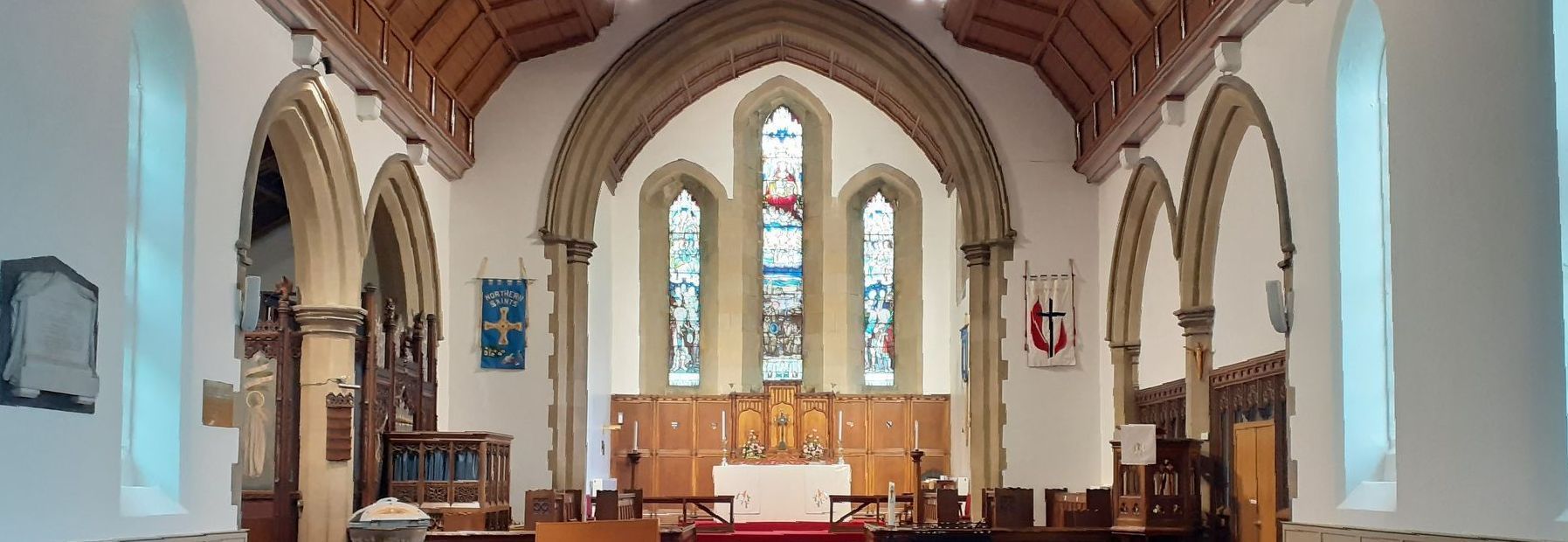A Short History of the Building
Holy Trinity Church is known locally as the ‘Church on the hill’ and has been central to Washington’s large parish for centuries. The oval mound on which it stands, once within a rounded enclosure, suggests the re-use of a pagan site. Rounded churchyards usually have Celtic origins.
Unfortunately the Domesday Book (1086-7) excludes places north of the Tees and because of this our earliest documents belong to the 12th century. In 1112 the area around the church was mentioned as being part of Bishop Rannulf Flambard’s lands. Again it is mentioned in 1149 as being part of Bishop William of St Barbe’s estates. The next bishop, Hugh of Le Puiset (1153 - 1195) decided to re-organise his estates. In one of the areas to be changed he required more land to build a castle and to make a new borough. This area was known at the time as Stockton and Hartburn and was held by William of Hartburn. William exchanged his lands and by 1180 William had settled in his new lands and was known as “de Wessington” from which the name Washington derives.
The next mention of the church came in 1196 when the bishop let out the church and its lands to a group of rectors. This year saw the start of the list of Rectors of the church beginning with John.
From the end of the 12th century a number of changes took place to the church with the help of endowments given by local wealthy families. In the 13th century the De Biddicks, a wealthy family of wool merchants from Newcastle, paid for a new large chantry. Again in the 14th century further additions and alterations took place both inside and outside the church.
Changes continued to take place until, in 1830, the inspecting architect, John Green, reported the building to be insecure. He advised that the building was irreparable and he prepared plans for its demolition and the building of a new church. In 1832 the old church was demolished and, sadly, it is likely that many historic objects disappeared. This included the Saxon (or early Norman font). However, fortunately, the font was later found, being used as a water trough, and returned to the church where it still stands.
The new church was opened in May 1833. It was now named Holy Trinity having been formerly known as St Mary’s. The cost of the new church was £1000. In 1859 an organ was placed in the church gallery. In 1867-8 a number of internal changes took place, one of them being the re-siting of the organ on the ground floor.
During the mid 19th century the population of Washington grew enormously and further changes were proposed to the building. Some even suggested another demolition and rebuild. Significant changes did take place and the church was re-opened on 22nd May 1883 by the Bishop of Durham and a surpliced choir appeared for the first time.
From 1883 to the present day changes have continued to take place both inside and outside the church. Major projects have included the dismantling of the bell cote in 1960 and the addition of a bell turret in 1962 above the west end - its copper spire was placed in position by a helicopter. Further improvements were made to the entrance area in the 1980s and 1990s and a small kitchen and toilet were provided.
Following the discovery that the wooden supports for the floor were deteriorating, in 2016, a major re-ordering was completed. The floor level of the Nave was lowered and levelled and the pews replaced with more flexible seating. Each new chair was individually sponsored in memory of a loved one or family. A new heating system and upgraded lighting and sound equipment were installed and the historic organ dismantled and refurbished. An extra step was added leading to the altar and the church was entirely redecorated.
